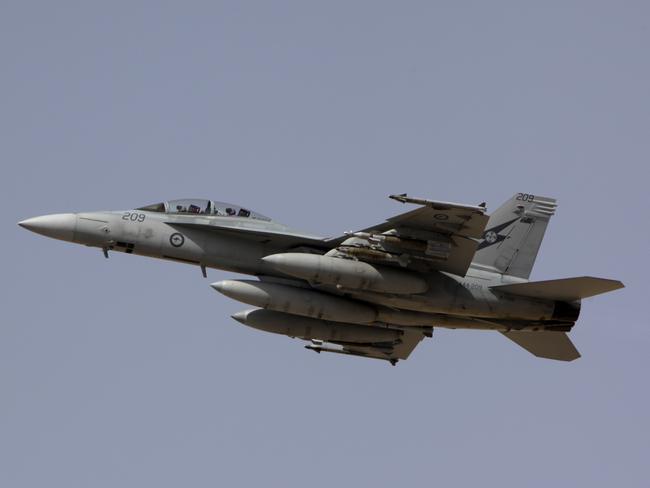The bombs Australia will drop on ISIS
THESE are some of the bombs Australia has in store for the Islamic State scourge, which air force technicians have secured to our fighter jets before they strike.
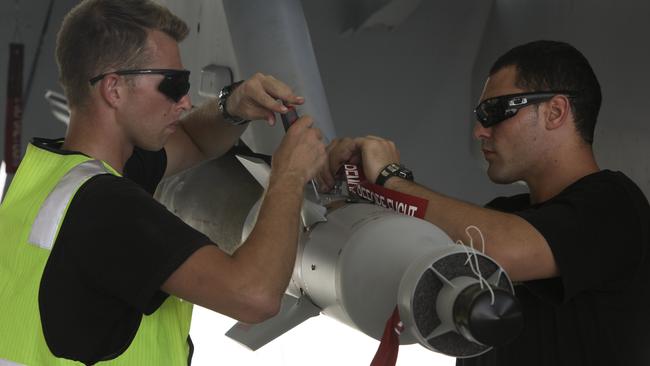
THESE are some of the bombs Australia has for the Islamic State scourge.
Transported to the Middle East in parts, the RAAF “gunnies”, or armament technicians, fit the warheads under the wings prior to each combat mission.
The first mission on Sunday afternoon saw two F/A-18F Super Hornet fighter jets head into combat over Iraq carrying GBU-38 Joint Direct Attack Munitions, or JDAMs.
The bombs are released free-fall from the jets, after which autonomous guidance kits, located in either in the warhead or tailfin, transform them into smart bombs and guide the weapons to their targets using GPS coordinates.
AUSTRALIAN FORCES: Ready to fight the Islamic State
US WEAPONS: That IS should really be afraid of
MOST WANTED: The ISIL leader with a $10m reward on his head

The F/A-18Fs — from 1 Squadron in Amberley — dropped no bombs on Sunday and took to the skies again over Iraq again just after 1pm in the UAE afternoon, or 8pm last night Sydney time.
The decision not to drop a bomb could be one of the most important a pilot ever makes in this war.
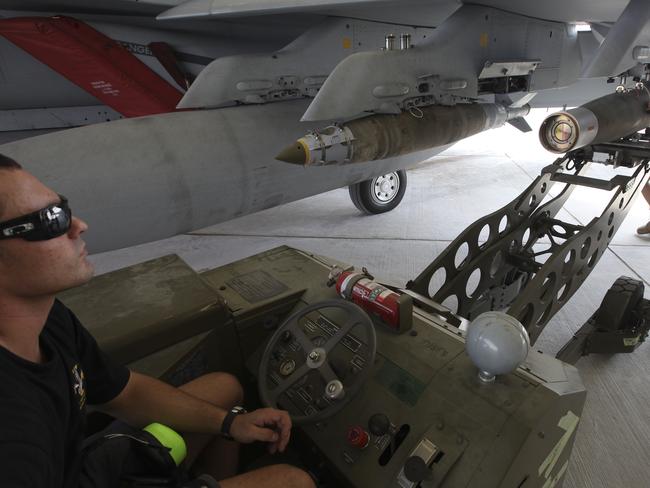
Pictures of innocent Iraqis — particularly children — maimed or killed by Australian bombs would be a disaster and could reset the course of this already chaotic battle theatre.
The Australians are determined they will withdraw from making strikes even on high-value targets if it means losing the PR war on the ground.

Once in the skies, the Australian fighters rely on the US-led Combined Air Operations Centre in the Middle East, which decides what to target.
COAC matches targets on a daily basis with what Coalition jets are in their air and what weapons they’re carrying.
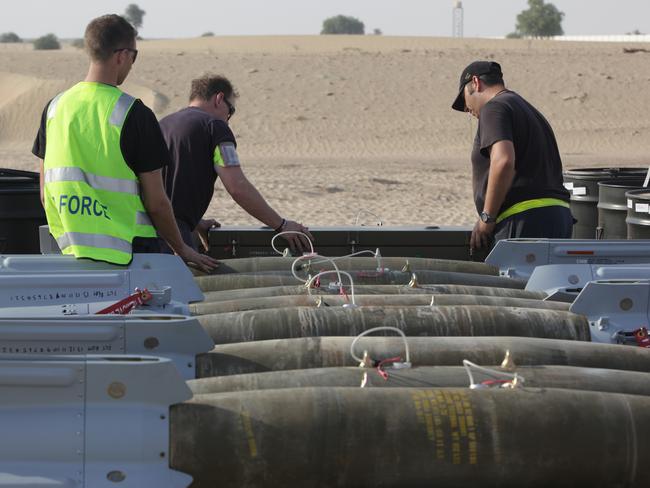
That means if the plane is carrying a penetrating warhead and they’re looking to hit a group of fighting crossing open ground, a bomb made to destroy buildings is the wrong weapon.
In other cases, the targets may have shifted location, meaning there’s no point striking. But the most important reason for pulling out of a bombing run is avoiding killing civilian Iraqis.
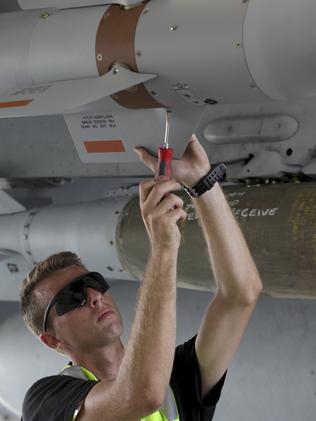
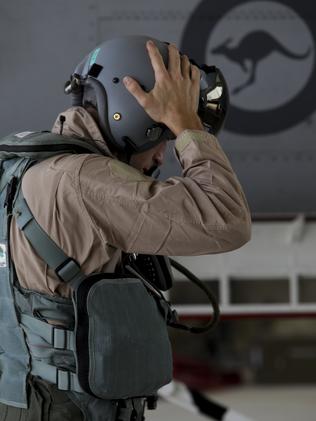
The assessment of whether or not to strike is determined on several levels, including from real-time video information from drones hovering over targets, and from the pilots themselves.
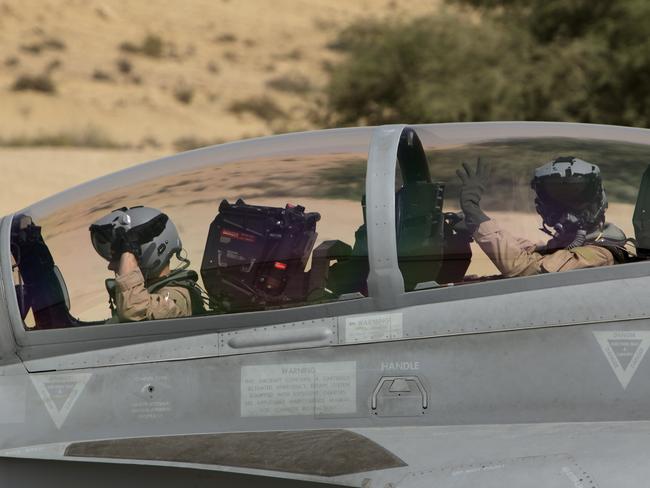
Though no munitions were deployed on the first mission, Australia entered the war against ISIL when the two Super Hornet fighter took off moments apart at 2.02pm on Sunday afternoon, or 9pm AEDT.
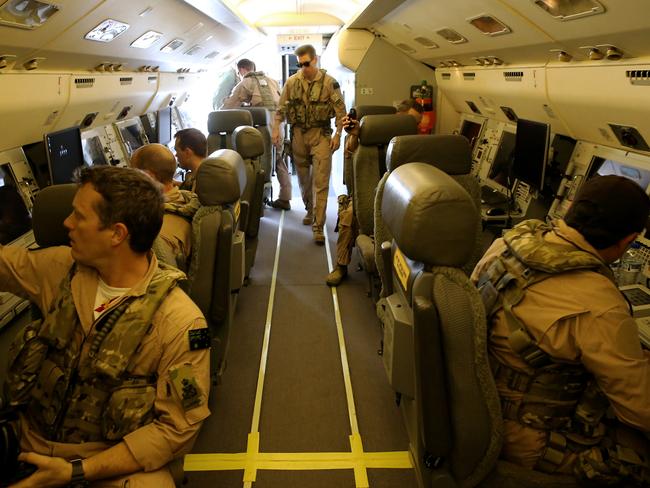
The jets were preceded by the RAAF’s KC-30A Multiple Transport Tanker, a converted A330 Airbus that took off at the stroke of 2pm and refuelled both jets during their almost eight-hour mission.
The RAAF’s E-7A Wedgetail early warning plane — the weird looking converted 737-300 that appears to have a blunt dorsal fin — was not used specifically to assist the Australian fighters.
Instead, the airborne platform has joined the wider Coalition assault — now involving the US, Britain, France, Australia, the Gulf States and soon Canada — in monitoring the skies over Iraq.
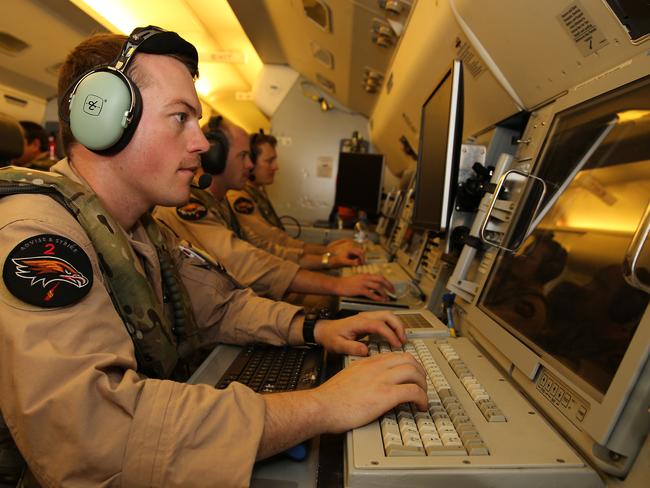
On Sunday, the departure coincided with the live telecast of the rugby grand final, which Australian airmen watched in a packed hall.
But the sight of the two fighters setting off low and fast out of the base made real for the 400 RAAF and 200 Special Forces in the Middle East that Australia was now formally involved in the fight against the terror forces.
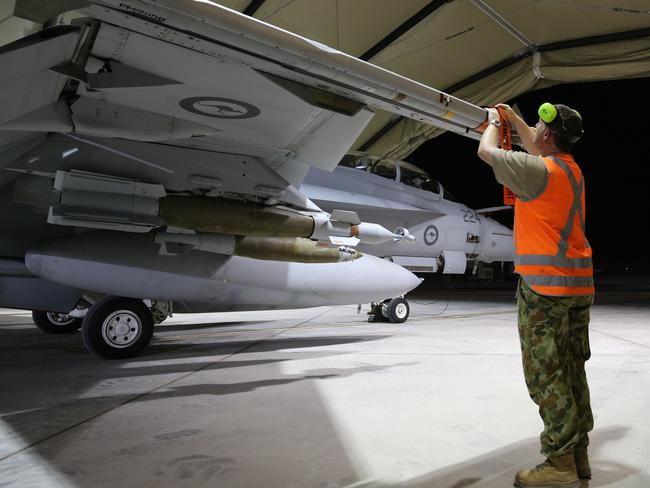
The F/A-18Fs are capable of carrying an array of weaponry, including AIM-9X Sidewinder missiles, GPS guided bombs and nose-mounted cannons.
Australia so far has located six F/A-18 Super Hornets in the UAE but can bring in another two if required.
Australian Special Forces are still awaiting Iraqi approval to enter Iraq to assist operations.
